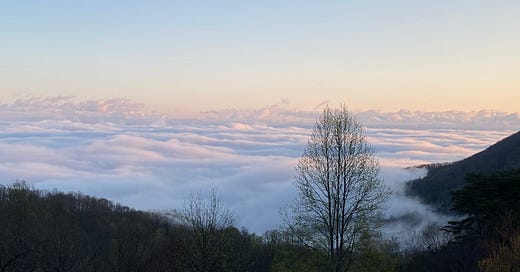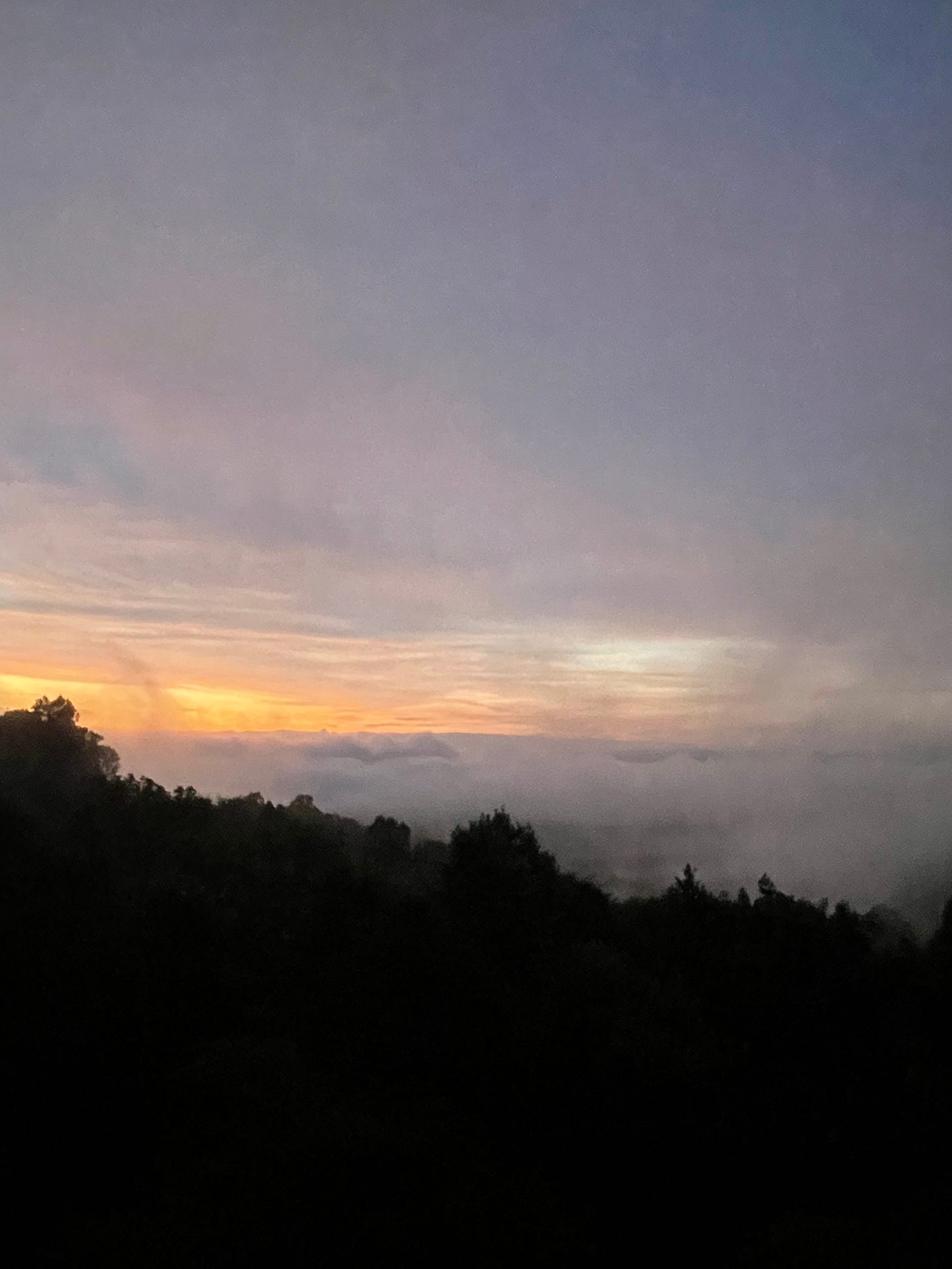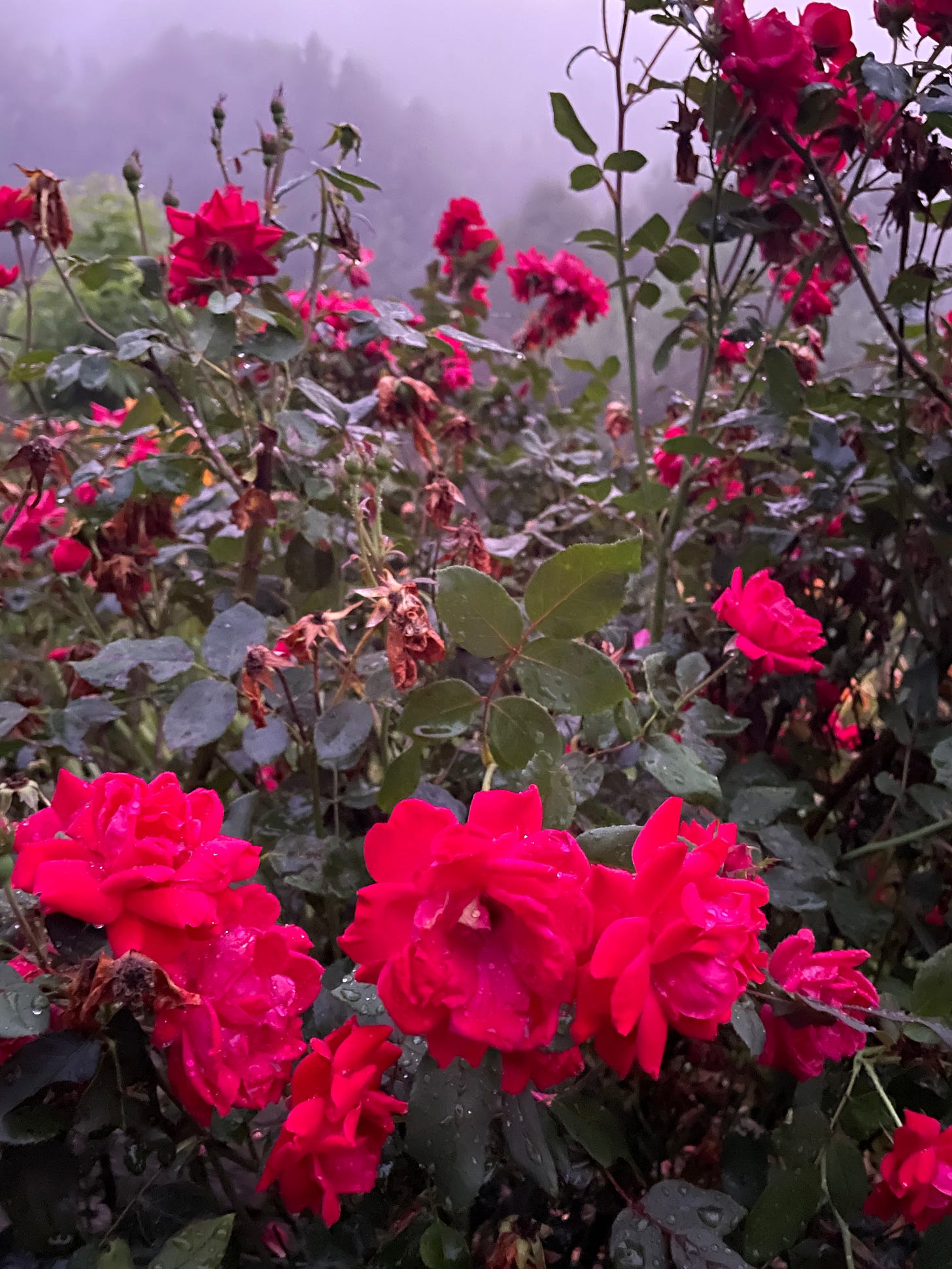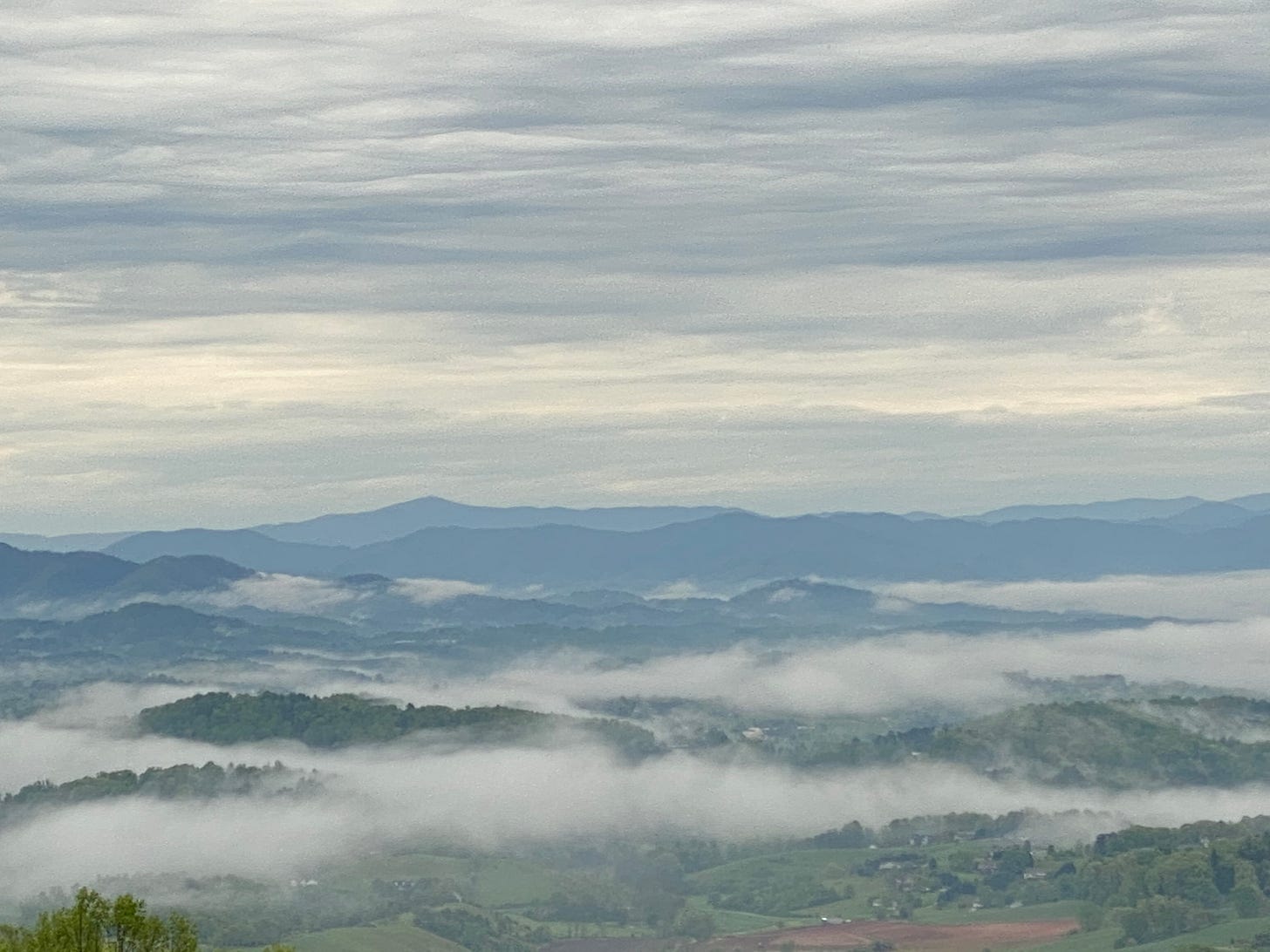Hi everyone!
I can almost promise this week’s newsletter will be shorter than usual, as I’m exhausted and just the wee-est bit tipsy after arriving late this afternoon in Charleston, South Carolina.
Let’s see what comes out, shall we? I’m as intrigued as you are.
Down in the Low Country
I’ve never been to Charleston, the genteel coastal city known for its architecture and founding role in the American Civil War. (Fort Sumter, the U.S. island base off Charleston Harbor, was fired on by South Carolina militia in what is considered the engagement that started the war from April 12-13, 1861.) My friend M. and I are still not 100% sure what we want to see here.
At the moment, I’m enjoying the weather outside, though not the mosquitoes. (Something you forget about when living in the mountains.) I’m also hearing the cicadas here, which we haven’t really had where I live. Not bothersome, but curiously loud.
My brain is rather empty now, so I don’t have the energy to do a deep dive into Charleston history.
In fact, hilariously, I was browsing the shelves in the Airbnb we’re in — a two-bedroom, one-bath that is essentially the downstairs of a two-story house — and discovered a book straight from home: Charles Frazier’s 1997 book Cold Mountain.
I’ve not read it, though the story would seem to be tailor-made for my interests: American Civil War saga that retells the Odyssey as a wounded and deserting Confederate soldier tries to make it back home to Western North Carolina. I know Anthony Minghella made a movie about it in 2003 with Jude Law, Nicole Kidman, Renée Zellweger, and Jack White of The White Stripes. To my surprise, it was well-received; I suppose any acclaim it garnered seems weak in comparison to his Oscar-winning adaptation of The English Patient.
So far, I’ve read the first chapter and about one-third of the second. What strikes me the most is how reverently Frazier speaks about the landscape, in descriptions that immediately take me back to my own memories of looking out our window. Cold Mountain is real and pretty high for east of the Continental Divide: at 6,030 feet, it’s higher than our elevation of about 3200 feet. The book itself is also based upon a real figure, apparently an ancestor of Frazier’s.
But let’s go back to the landscape. The first two chapters introduce us to the two main characters: Inman, the wounded soldier who longs to return to Cold Mountain, and Ada, a well-educated minister’s daughter from Charleston struggling to survive on the farm near Cold Mountain that her father decided to move to in order to preach there. Both consider the mountain (and, by extension, the mountains that surround it) in these chapters in ways that reflect their literal and emotional positions.
Take their differing impressions of the mountains in fog. Here’s Inman, writing of a time he spent on nearby Balsam Mountain:
Mornings on the high bald were crisp, with fog lying in the valleys so that the peaks rose from it disconnected like steep blue islands scattered across a pale sea.1
Here’s Ada, writing about the weather on Cold Mountain:
Through the window, Ada had been given a tutorial in all the forms of visible moisture — light haze, dense valley fogs, tatters of clouds hanging like rags on the shoulders of Cold Mountain, grey rain falling straight down in streaks all day as if old twine hung from the heavens.2
The distinction between the invigorating, almost National Park poster beauty of Inman’s evocation and Ada’s drabber, sadder depiction is striking. It makes sense, of course: Inman is a wounded man haunted by flies in a hot field hospital remembering a place he loves, while Ada is struggling not to starve in the same place.
M. and I saw fog in the evening in our mountains last night, after the first rain in a long while. She took some pictures:
(A close-up of my mother’s roses when the fog was so thick we couldn’t see beyond the front yard.)
But these depictions in Cold Mountain remind me of my own pictures, both taken from our deck:
It’s that first one I love the best: when the fog looks like a giant sea of wave crests, almost like the white foam created by jacuzzi jets. But lovelier.
The second photo is far more like Ada’s vision of slightly tattered clouds, like a cotton ball stretched out into long tufts that look like limp, flavorless cotton candy. Still beautiful, but less so.
Honestly, that’s all I’ve got for tonight — and for this week. Dead tired, maybe able to finish Ada’s chapter and that’s it.
I wonder what impressions I’ll have of Charleston’s Low Country landscape after a few days in it. I suspect I’ll enjoy it, but I’ll be happy to get back to the mountains.
In Ada’s chapter, she mentions how the mountains are harder to like than the beautiful vistas of Charleston “during an evening walk along the Battery with Fort Sumter off in the distance, the great white houses at one’s back, palmettos rattling their leaves in a sea breeze.”3
Of course, she would say that: she’s a stranger in that land, grieving the death of her father who brought her there, and struggling to subsist on it. The image gives me something to look for over the next few days as we get to know this city’s charms. And I suspect the more I read Cold Mountain, the more both Inman’s and Ada’s impressions of the mountains change with experience.
But I have so many friends who love to be by the water and feel almost as if they’re missing a limb if they’re not in walking distance of a river, beach, or lake. I don’t think I’ll ever get quite that connected to mountains. But at the moment, that’s the vista I want out my windows, so I’m grateful it’s the vista I have.
Recommendations
Travel with friends! M. and I haven’t traveled together since the pandemic. I greatly appreciate her willingness to mask with N95s to lower the risk of Covid, and I’ve had a great time with her.
This Week’s Dose of K-Pop: ENHYPEN (엔하이픈), “Drunk-Dazed”
Nothing deep about this one. It’s a great song, and it well sums up how my brain feels on five hours of driving.
Love y’all,
Sara
Cold Mountain, 19.
Idem, 35.
Ibid.








Wow! What beautiful photos!!